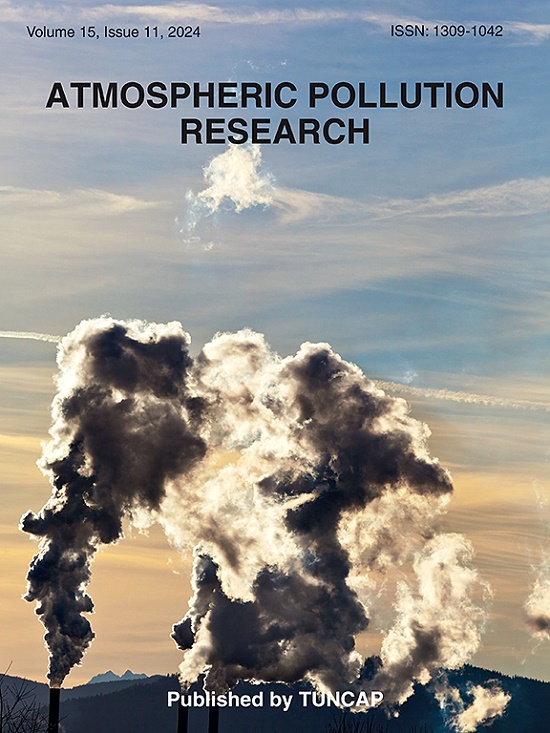3DVAR meteorological data assimilation and aerosol impact on the simulation of heat wave 2022 over Haryana using WRF-Chem
IF 3.9
3区 环境科学与生态学
Q2 ENVIRONMENTAL SCIENCES
引用次数: 0
Abstract
The rising frequency of heat waves in India presents significant risks to public health, agriculture, and the economy. In March 2022, temperatures reached a record-breaking 33.10 °C, the highest in 122 years resulting in two major heat wave events: March 11–21 and March 26–31, which claimed 33 lives. This study delves into the impact of anthropogenic emission/aerosols and meteorological data assimilation on model-predicted surface meteorological variables using “Weather Research and Forecasting (WRF) model” coupled with Chemistry (WRF-Chem). Four distinct simulation scenarios namely, WRF, WRFDA (WRF with meteorological Data Assimilation), WRF-Chem, and WRF-ChemDA (WRF-Chem with meteorological Data Assimilation) were executed across the Haryana domain to assess the sensitivity of model outputs. Analyses within the WRFDA and WRF-ChemDA frameworks utilized a 6-hourly cyclic 3-Dimensional Variational (3DVAR) Data Assimilation (DA) of NCEP ADP Surface Observational Fields. Most critically, the incorporation of aerosols and DA techniques markedly improved forecasts of key meteorological variables, including 2 m Temperature (T2), 2 m Relative Humidity (RH2), Planetary Boundary Layer Height (PBLH), and Outgoing Longwave Radiation (OLR). Skill assessment metrics, including the Heidke Skill Score (HSS ∼ 0.5), Accuracy (ACC >0.9), and Probability of Detection (POD ∼ 1), demonstrate that WRF-ChemDA outperformed other models, especially during heat wave events. Conclusively, this study advocates for the meticulous selection of modeling approaches to accurately simulate heat wave events, ensuring that selected models adeptly capture the intricate dynamics and complexities of extreme temperature phenomena.

求助全文
约1分钟内获得全文
求助全文
来源期刊

Atmospheric Pollution Research
ENVIRONMENTAL SCIENCES-
CiteScore
8.30
自引率
6.70%
发文量
256
审稿时长
36 days
期刊介绍:
Atmospheric Pollution Research (APR) is an international journal designed for the publication of articles on air pollution. Papers should present novel experimental results, theory and modeling of air pollution on local, regional, or global scales. Areas covered are research on inorganic, organic, and persistent organic air pollutants, air quality monitoring, air quality management, atmospheric dispersion and transport, air-surface (soil, water, and vegetation) exchange of pollutants, dry and wet deposition, indoor air quality, exposure assessment, health effects, satellite measurements, natural emissions, atmospheric chemistry, greenhouse gases, and effects on climate change.
 求助内容:
求助内容: 应助结果提醒方式:
应助结果提醒方式:


